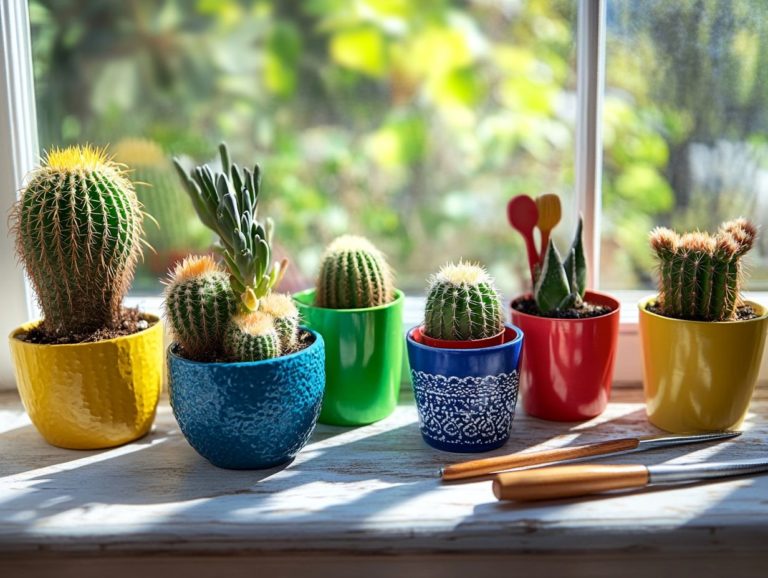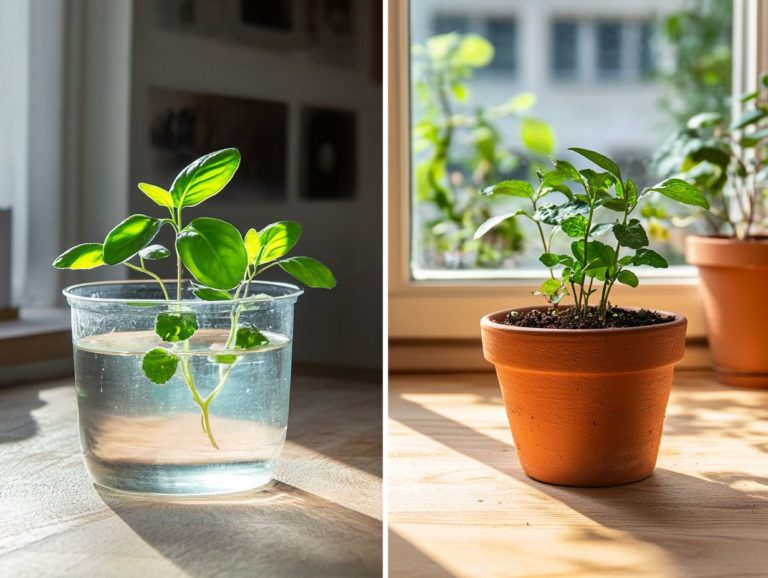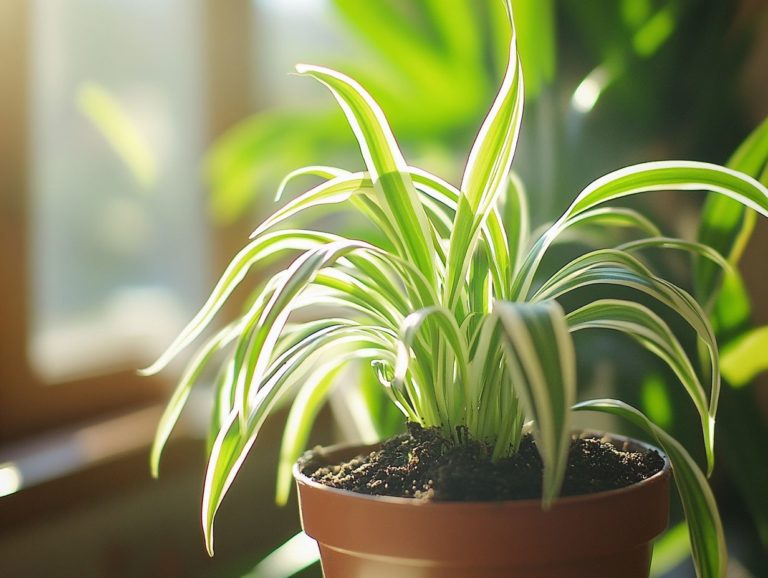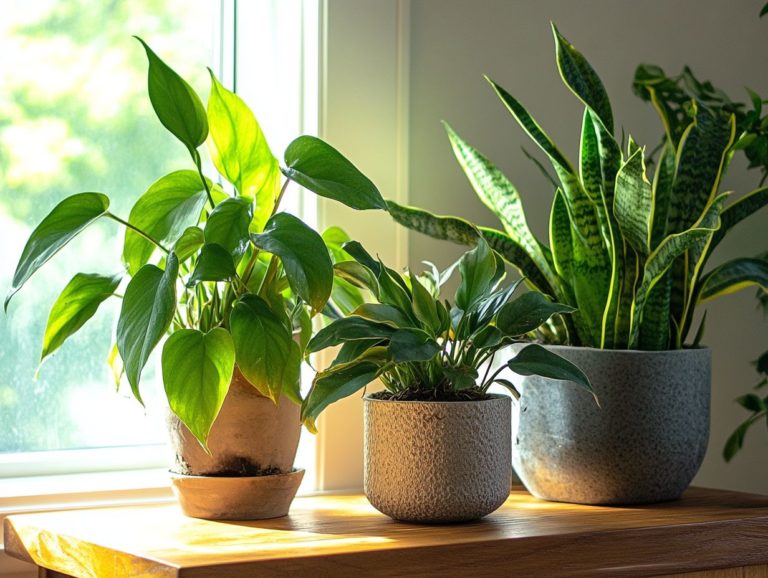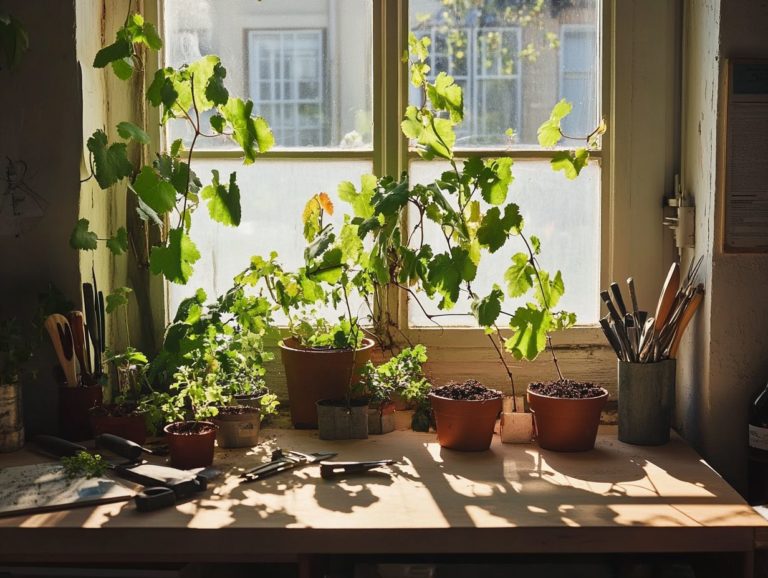Best Practices for Indoor Plant Growth after Propagation
Indoor plant propagation is a rewarding journey, offering you the chance to cultivate new life from your favorite greens.
Whether you re a seasoned plant parent or just beginning to explore this vibrant world, grasping key methods like cuttings, division, and layering can elevate your indoor garden significantly.
This guide will help you master the care of your newly propagated plants, how to pot them successfully, and common issues that may arise along the way.
With insights for optimal growth, you ll be well on your way to crafting a lush, thriving indoor oasis.
Contents
- Key Takeaways:
- What is Plant Propagation?
- Methods of Propagating Indoor Plants
- Caring for Newly Propagated Plants
- Transferring Propagated Plants to Larger Containers
- Common Issues with Propagated Plants
- Tips for Successful Indoor Plant Growth
- Frequently Asked Questions
- What are some best practices for indoor plant growth after propagation?
- How often should I water my plants after propagation?
- Is fertilizing necessary after propagation?
- Do I need to repot my plants after propagation?
- Should I prune my propagated plants?
- Are there tips for maintaining a healthy environment for my plants after propagation?
Key Takeaways:

- Light, water, and nutrients are crucial for the growth of newly propagated plants, emphasizing the importance of humidity requirements in their care.
- Proper timing and techniques for repotting newly propagated plants can ensure their successful growth.
- Identifying and addressing common issues with propagated plants is key to maintaining their health and promoting optimal growth.
What is Plant Propagation?
Plant propagation is the art of producing new plants from existing ones, giving you the opportunity to expand your collection of houseplants like Monstera, pothos, tradescantia, and philodendron without having to buy new specimens.
This practice not only enhances biodiversity but also gives you the power to grow strong plant cuttings, share the joy of plants with friends, and experiment with best practices for propagating snake plants tailored to different species and growing conditions.
Methods of Propagating Indoor Plants
You have several elegant methods at your disposal for propagating indoor plants, including cuttings, division, and air layering. Each technique presents its unique advantages and is particularly suited to various species, such as tradescantia and aglaonema.
Embracing these methods enhances your houseplant propagation experience, allowing you to cultivate a thriving indoor garden with ease and finesse.
Cuttings, Division, and Layering
Cuttings, division, and layering are essential propagation techniques that enable you to create new plants from your existing ones. These skills are invaluable for any houseplant enthusiast looking to expand their collection, especially with beloved species like Selenicereus and Hoya.
Employing these methods not only allows you to propagate your cherished plants but also deepens your connection to the world of horticulture. When taking healthy cuttings, select a robust stem or leaf, ensuring it has a few nodes to promote rooting. Effective division involves carefully separating root systems without causing damage, helping both plants grow well.
On the other hand, air layering is a technique that lets roots develop directly on the parent plant, which is particularly beneficial for climbing species. Using rooting hormone can boost your success rates significantly by encouraging quicker root development, while choosing the right propagation media—the material used to help plants grow roots—ensures optimal moisture and nutrient availability. To avoid common pitfalls, be sure to learn about the top mistakes in indoor plant propagation.
Altogether, these techniques offer you a rewarding way to multiply your green treasures.
Caring for Newly Propagated Plants

Caring for your newly propagated plants is essential for their survival and growth. By understanding their specific light and humidity requirements, along with effective watering techniques, you can ensure that your healthy cuttings flourish and transform into robust houseplants.
Light, Water, and Nutrient Requirements
Understanding the light, water, and nutrient needs of your newly propagated plants is key to their flourishing. Many houseplants thrive under bright, indirect light. They also require careful attention to their watering and fertilization schedules.
Providing optimal light conditions enhances photosynthesis and protects against leaf scorch a condition that occurs when plants are exposed to direct sunlight for too long.
In addition to providing the right light, you should set a regular watering schedule. Water your plants thoroughly but allow them to dry out slightly between waterings to prevent root rot, which occurs when roots sit in water for too long and begin to decay.
Introducing nutrients at the right moment typically during the active growing season can greatly enhance your plants’ health. To see your plants thrive, follow these best practices, such as using diluted liquid fertilizers, to promote robust growth and vibrant foliage.
Transferring Propagated Plants to Larger Containers
Transferring propagated plants to larger containers is a crucial milestone in their growth journey. Understanding the optimal timing and method for repotting can significantly influence the health of your plants.
Factors like garden soil quality, humidity levels, and watering techniques all play a vital role in ensuring successful acclimatization. Your attention to these details can make all the difference in nurturing thriving, resilient plants.
When and How to Repot
Knowing when and how to repot your propagated plants is crucial for their ongoing growth and health. Improper potting can stress healthy cuttings and impede their development.
Timing is everything; early spring is typically the ideal window for repotting. During this season, plants are coming out of dormancy, making them more adaptable to new surroundings.
Watch for signs that your plant might be ready for a new home, including:
- Roots pushing through the drainage holes
- Stunted growth
- Yellowing leaves, often linked to common issues with propagated plants.
When you’re ready to pot up a plant, start by ensuring you follow best practices for indoor plant pest control to promote healthy growth:
- Choosing a slightly larger pot with good drainage.
- Gently removing the plant from its old container.
- Loosening any tightly bound roots.
- Placing it in fresh propagation media.
Be sure to water it thoroughly to settle the soil around the roots. For optimal results, refer to the best practices for indoor plant soil care and keep a close eye on it for any signs of stress as it adjusts to its new environment.
Common Issues with Propagated Plants
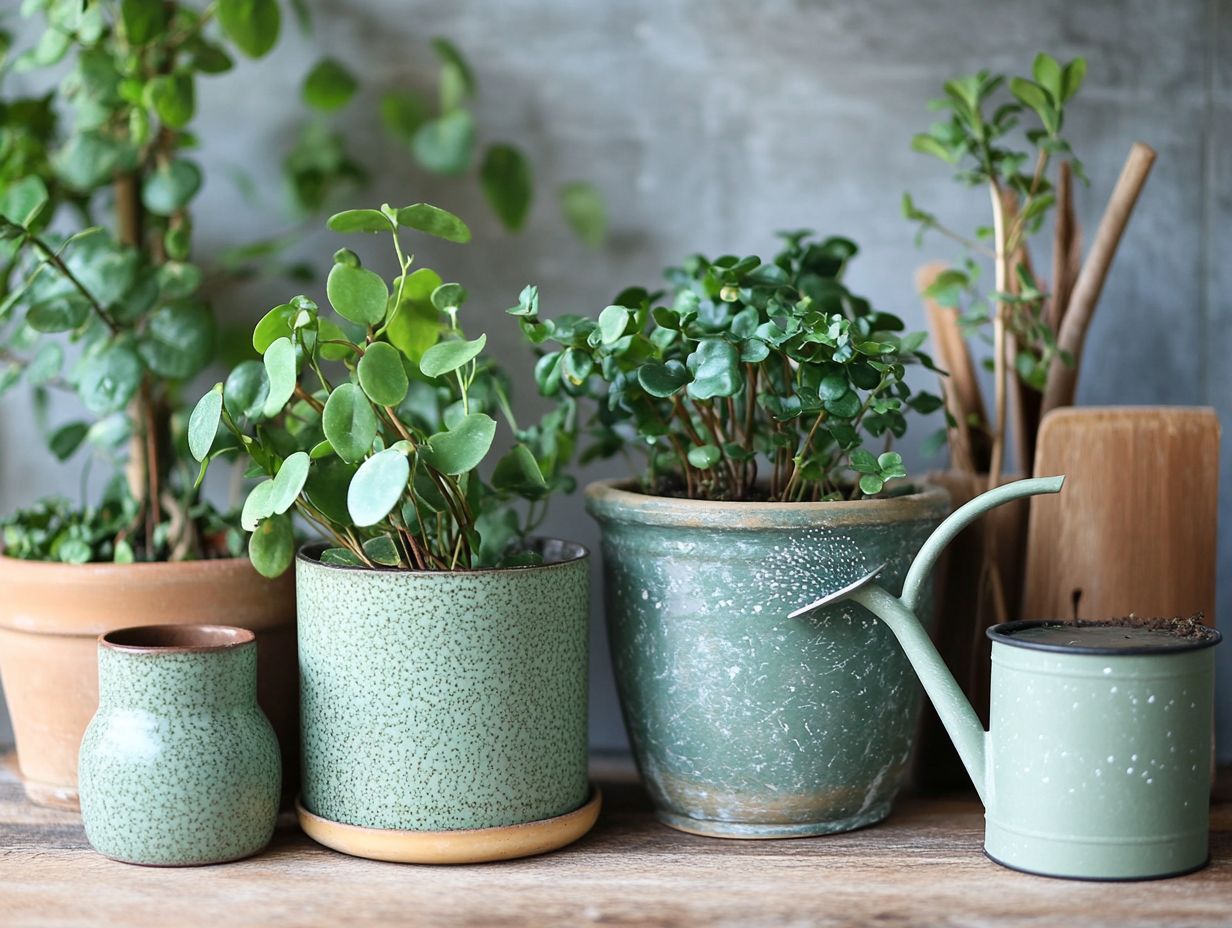
Common issues with propagated plants can stem from improper care, unfavorable environmental conditions, or the health of the initial cutting. By identifying and addressing these problems swiftly, you can ensure that your plants thrive and continue to grow beautifully.
Identifying and Addressing Problems
Identifying and addressing issues in your newly propagated plants is essential for maintaining their health. By understanding the symptoms of common problems, such as overwatering or insufficient humidity, you can take timely action to ensure your plants thrive.
You may notice leaf discoloration like yellowing or browning tips which often signals nutritional deficiencies or watering issues. Drooping leaves can indicate chronic overwatering, leading to root rot and compromising your plant’s vitality.
To remedy these concerns, ensure your cuttings are in well-draining soil and pots with drainage holes. Maintaining adequate humidity, perhaps by misting or using a humidity tray, can significantly boost your plants overall health. Adjust your watering schedule to allow the soil to dry out slightly between waterings for their well-being.
Tips for Successful Indoor Plant Growth
To achieve optimal growth for your houseplants, it s essential to implement best practices in plant care and propagation techniques.
By understanding the specific needs of your plants such as the ideal propagation media, plant care, and humidity requirements you can significantly enhance their health and vitality.
Take a few moments to focus on these details, and watch your plants flourish!
Best Practices for Optimal Growth
To achieve optimal growth for your indoor plants, follow best practices. Proper watering, appropriate light exposure, and right humidity are key.
Each plant has unique needs. Some thrive in bright, indirect sunlight while others prefer low-light environments.
Create a watering schedule based on the season and soil type. Always check for dryness before watering.
Use a hygrometer to monitor humidity. This is crucial for tropical plants that love higher humidity.
Regular misting or a humidifier can turn your indoor garden into a thriving oasis. Keeping humidity just right will boost plant health!
Frequently Asked Questions

-
What are some best practices for indoor plant growth after propagation?
Provide adequate lighting. Place your plants where they can get enough light.
-
How often should I water my plants after propagation?
Water according to your plant’s needs. Research the specific requirements for each type.
-
Is fertilizing necessary after propagation?
Fertilizing helps provide essential nutrients. Avoid over-fertilizing to protect delicate roots.
-
Do I need to repot my plants after propagation?
Check root growth regularly. Repot as needed to prevent root-bound plants.
-
Should I prune my propagated plants?
Pruning promotes stronger growth. Wait until roots are well-established before pruning.
-
Are there tips for maintaining a healthy environment for my plants after propagation?
Maintain proper humidity and temperature. A humidifier or regular misting helps create the best environment.

